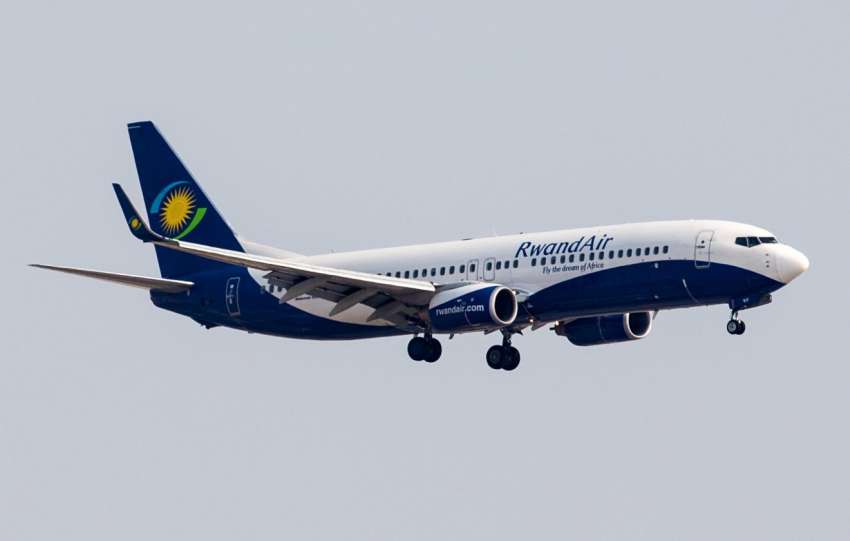Today, we thought we would take a look at one of the world’s most iconic airport- London Heathrow (LHR), and see what the future looks like for the United Kingdoms’ largest airport. Before we gaze into the crystal ball, it might be a good idea to take a look back in history and see how Europes’ busiest airport came about.
Located 14 miles (23 km) west of Central London, we can trace Heathrow’s origins back to the Middle Ages when a semi-rural land called “Hetherewe” acted as a divider between farmland and heath (an area of open uncultivated land). This uncultivated land eventually got used to raise crops in the early 1800s and was used as farmland until the early 20th century, when man’s obsession with flying began.
The area was used for training during WWI
In the middle of the 1910s, Fairey Aviation started building and testing its aircraft from a facility called Northolt Aerodrome, located six miles north of today’s modern Heathrow Airport. Throughout the First World War, what is today called Heathrow airport was used as a training base for the British Flying Corps. On August 25, 1919, Hounslow Heath Aerodrome, just a couple of miles away from where Heathrow Airport is now, was the starting point for the world’s first-ever international flight when a De Havilland DH-4A flew from London to Paris. During the 1920s, the aerodrome fell out of favor due to a tendency to get muddy and foggy during the winter.
Despite the area’s problems, Fairley Aviation was enamored with the location and in the late 1920s purchased 148 acres of land from local farmers to form what would become the Harmondsworth Aerodrome, then The Great West Aerodrome. During the Second World War, the site was used as a base for the Hawker Hurricane during the Battle of Britain and later as a base for Halifax and Landcaster bombers. When the war ended in 1945, a 9,000-foot long runway had been built, allowing commercial aviation to take over from the military.
The first commercial flight was in 1946
The first commercial flight aboard a converted Lancaster bomber called “Starlight” took off for Buenos Aries on January 1, 1946. At the time, passenger terminals resembled nothing like they do today and were nothing more than large tents. To get to the aircraft, passengers walked on raised wooden boards to protect their shoes from the mud. It was freezing with no heating during the winter but much nicer in the summer as the tent walls were removed to allow for a breeze.
Despite the inconveniences, Heathrow’s passenger numbers steadily increased, highlighting the need for permanent structures to be built at the airport. British architect Frederick Gibberd was appointed to design a modern airport. Central to his plan was a 122-foot high control tower and an underground passageway linking a terminal called the “Europa” building, and a block of offices called the “Queen’s Building.”
Heathrow expanded to accommodate the Jumbo Jet
London Airport was officially renamed Heathrow in 1966. By 1969, it had three terminals and more than five million passengers a year traveling to all corners of the globe aboard new Boeing 707 and Vickers VC10 jets. The arrival of the 1970s saw the world shrink even more as Concorde and widebodies arrived on the scene. Terminal 3 added an arrivals building while runway lengths were extended to accommodate larger units such as the Boeing 747. Heathrow Airport was also the first public facility in the UK to install moving walkways.
By the end of the decade, 27 million people were flying through Heathrow each year. As the number of passengers continued to grow, so did the need for Heathrow to expand with Terminal 4, the home of British Airways opening for business in 1986. The same year also saw the completion of the M25 motorway linking Heathrow Airport to Britain’s major road network.
Terminal 5 opened in 2008
Built for £4.3 billion, Terminal 5 opened on 27 March 2008 with a direct rail link into central London. United Kingdom flag carrier British Airways moved its operations to Terminal 5, as did fellow IAG owned Iberia and oneworld alliance member American Airlines.
The opening of Terminal 5 marked the beginning of an exciting new chapter for Heathrow Airport, which was further enhanced when the brand new Queen’s Terminal (Terminal 2) opened to the public on June 4, 2014.
Today, Heathrow Airport remains one of the world’s busiest airports serving around 89 million passengers per year before the current pandemic. For years, there have been arguments both for and against Heathrow building another runway to complement its existing two. Supporters of a third runway say that it would create thousands of new jobs and boost international trade. The proposal for a third runway also includes upgrades to existing terminal buildings and new car parks. While it seems to make sense, it would also have a huge impact that would call for the diverting of rivers and the need for an underground tunnel for the M25 motorway.
When speaking about the benefits of a third runway, Heathrow chief executive John Holland-Kaye told the BBC the following:
“If we don’t expand our only hub airport, then we’re going to be flying through Paris to get to global markets.”
Green Party MP Caroline Lucas and local environmental groups don’t believe Heathrow’s assurances about the project and believe that a new runway would mean unacceptable noise and pollution levels. For a third runway to be built, the village of Longford and its 751 homes would have to go, and despite Heathrow saying they will pay residents the full market value of their homes plus 25%, not everyone is onboard.
A third runway has been talked about for years
Former prime minister Gordon Brown approved the building of a third runway for Heathrow Airport in 2009, saying that it was needed for economic reasons. However, the plan was scrapped by the subsequent Conservative-Liberal Democrat coalition government in 2010. In 2015 a commission was set up to look at Heathrow’s capacity problems and recommended building a third runway. The decision, like all previous talk about a third runway, was immediately opposed by several local MPs, including the current prime minister, Boris Johnson, whose Uxbridge and South Ruislip seat is next to Heathrow Airport.
At the time, Johnson said that he would lie down in front of bulldozers to prevent its construction. A reprieve of sorts was granted to those opposed to the plan when courts ruled that a third runway was unlawful because it did not adhere to climate commitments. This ruling turned out to be short-lived after the Supreme Court ruled that climate concerns were less stringent when it was first proposed.
What happens now?
Heathrow can now make a planning application while at the same time trying to convince the public that a third runway is necessary. Environmentalists will not give up the fight by trying to stop the plan any way they can.
In some ways, the global coronavirus pandemic and the reduction in the number of people flying has lessened the need to build a third runway. And when you look at it as an outsider with no financial incentive, you conclude that it is probably not needed. Besides Heathrow, London has five other airports, London City, London Gatwick, London Luton, London Stansted, and London Southend. With the new Crossrail set to open in 2022, expanding a rail link to London Southend Airport from Liverpool Street Station could negate the need for a third Heathrow runway.
About Guide2Uganda
Guide2Uganda (www.guide2uganda.ug) is the most comprehensive source of information about Uganda that exists on the web, with more content on Uganda and surrounding towns, attractions, museums and galleries than any other online guide that currently exists for Uganda as well as being a dynamic news and comprehensive events driven site with content being added daily.
According to WeFollow & Peer Index (whom both measure online influence) we are among the most influential online media organizations in Uganda. We were also awarded for ‘’Best Destination Website in Uganda’’ by Jumia Travel Uganda in the 2017-2018 Africa Travel Awards.
If you have a travel story to share with the world, email: info@guide2uganda.ug




